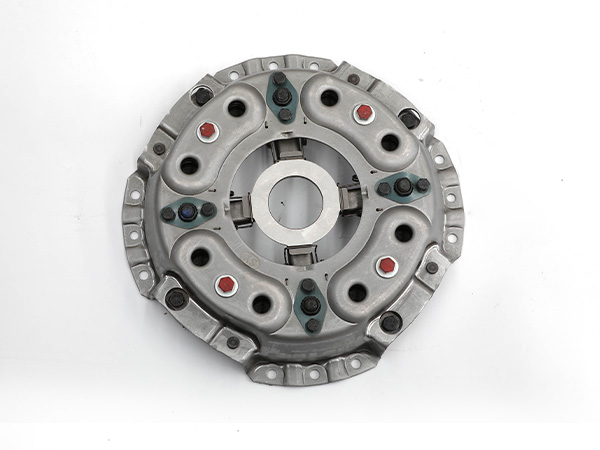The so-called clutch is to use “off” and “on” to transmit the right amount of power. The clutch consists of a friction plate, a spring plate (the tractor uses a disc spring, and the harvester uses a diaphragm spring), a pressure plate and a power take-off shaft. It is arranged between the engine and the gearbox to transmit the torque stored on the engine flywheel. To the gearbox to ensure that the agricultural machinery transmits the appropriate amount of driving force and torque to the driving wheel under different working conditions.
Clutch is a frequently rubbed part on agricultural machinery (friction plate is a wearing part), it will wear with the increase of use time and frequency, which will cause clutch slip phenomenon.
The clutch is the device that connects the agricultural engine and the transmission, and the clutch pedal is the operating device of the clutch. When the clutch pedal is stepped on or lifted, the engine and the transmission will be temporarily separated or smoothly combined to cut off or transmit power, and realize changes in the movement state of agricultural machinery such as starting, shifting, and parking. Slowly lift the clutch until it is fully lifted. If the engine stalls when the clutch is lifted, it means that the clutch is not slipping. If the engine does not stall when the clutch is lifted, it may be a problem with the clutch.
Features of clutch for agricultural machinery
Tractor clutch: The tractor clutch generally uses a double-acting clutch, that is, one way is responsible for walking, and the other way is responsible for power output. Due to structural reasons, the gap between the flange of the clutch pressure plate and the casing is relatively small, especially when the air humidity is high, and the tractor is not used every day (sometimes out of use for several months), so it is bound to be prone to rust. , The adhesion between the pressure plate bracket and the flange is caused by rust, which leads to the incomplete separation of the clutch.
Suggestion: Before using the tractor that has been parked for a long time, the tractor operator should first open the clutch observation port, use a flat-blade screwdriver to turn the clutch assembly, and spray a little rust remover on the three flanges of the clutch pressure plate, and then step on the A few clutch pedals to move it back and forth, and then use the tractor normally for various tasks.

How to operate the clutch
First, press the pedal firmly with the forefoot of your left foot, and step down or lift the clutch pedal with the flexion and extension of the knee and hip joints. Do not use the toes, soles or heels to step on the clutch pedal to prevent insufficient pedal strength or slip off. pedal. The action of stepping on the clutch pedal should be fast and all the way to the end, so that the clutch can be completely disengaged when the clutch pedal is lifted.
It should be determined according to the manipulation situation. Generally, when the working gear is changed to neutral, the clutch pedal can be lifted quickly. When the agricultural machine starts or shifts, the free stroke before the disengagement is not yet engaged can be slightly faster. When the clutch starts to engage When the clutch is fully engaged, the foot should be quickly removed from the pedal and placed under the pedal. When the clutch is not used in the work of agricultural machinery , Do not put your foot on the clutch pedal, so as not to cause the clutch to have a semi-linked phenomenon, affect the transmission torque, and increase the wear of the parts.
…
For more details click to visit:https://www.syclutch.com/news/correct-use-of-agricultural-clutches.html


